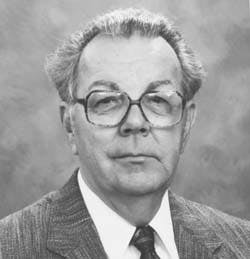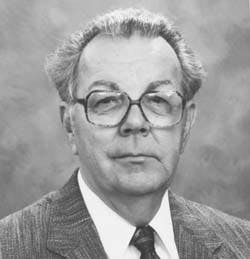TECHNOLOGY U.S. LNG imports, exports to grow steadily through 2000
Edward J. Swain
Consultant
Houston
LNG imports into and exports from the U.S. will begin increasing later this year in trends that will take them each past 70 bcf by 2000.
U.S. imports
Total 1994 LNG imports from Algeria to the U.S. were 50.78 bcf compared to 81.69 bcf in 1993, a decrease of 37.8%.
About 65% of the imported Algerian LNG was received at Distrigas Corp. north of Boston. The remaining LNG was received at the Pan National terminal in Lake Charles, La., which was reopened in December 1989.
Sonatrach, the Algerian state-owned oil and gas company, began curtailing shipments of LNG to the U.S. in August 1994 reportedly because of major renovations to the country's liquefaction plants. No shipments of LNG from Algeria arrived in the U.S. in August, October, November, and December of 1994.
Shipments of LNG at reduced levels were received during the first half of 1995. The impact of the curtailments may lessen in the second half of 1995 because some of the renovations were expected to be finished in summer 1995. Some level of curtailment, however, will likely continue into this spring when all the renovation programs are scheduled for completion.
The total value of LNG imported into the U.S. during 1994 was $115.7 million at a yearly average price of $2.28/Mcf. The 1993 yearly average price was $2.20/Mcf. That's a price increase of 3.6% for imported LNG.
Receiving terminals
The four LNG receiving terminals located along the U.S. East and Gulf Coasts and their capacities are shown in Table 1. [16297 bytes]
The Distrigas terminal was restarted in 1988 after being shut down in 1987. The quantities of LNG imported through the terminal during 1990-1994 and forecast quantities through 2000 are presented in Table 2 [31849 bytes]and Fig. 1. [70593 bytes]
The terminal received 32.89 bcf (13 shipments) during 1994. No shipments were received in August, October, November, and December of the year because of curtailments by Sonatrach. The terminal received 5.13 bcf (2 shipments) during the first half of 1995, suggesting the total yearly rate for 1995 will likely be 15.4 bcf.
The terminal primarily serves customers in New England. In the past, delivery of LNG to them was mainly by trucks and some distribution by pipeline. New tie-ins to several local major natural-gas pipelines and new industrial contracts, however, have made major delivery changes in Distrigas' operations.
A 20% annual growth rate is assumed using the average of LNG imported during 1991-1995 as a base point and extending the forecast to 2000. Under this growth assumption, the Distrigas terminal is only utilized 67% in 2000.
Pan National's LNG terminal at Lake Charles reopened during 1989, receiving one shipment of LNG from Algeria in December. The quantities of LNG imported through the terminal during 1990-1994 and forecast quantities through 2000 are presented in Table 2 [31849 bytes](Fig. 1 [70593 bytes]).
The terminal received 17.89 bcf (seven shipments) during 1994 with no shipments received in February, May, August, September, October, November, and December because of curtailments by Sonatrach.
During first half 1995, the terminal received 5.15 bcf (two shipments), suggesting a total yearly rate for 1995 will likely be 10.3 bcf.
The terminal is able to move vaporized LNG into many major natural-gas trunk lines serving customers all along the middle-upper East Coast and in the Central Great Lakes.
In recent years, the natural-gas pipeline serving growing gas markets in Florida was expanded in delivery capacity. Vaporized LNG from the Lake Charles terminal was to supply the additional natural-gas demands in Florida.
If any additional natural-gas demands have occurred in Florida, gas supplies from offshore gas fields near Mobile have met the demands. New production in the offshore fields and additional distribution systems are being installed and will supply up to 1.2 bcfd of treated natural gas to serve Florida markets.
Although a 20% annual growth rate for imported LNG is assumed to take place in the lower Atlantic, the Lake Charles LNG receiving terminal will be utilized only about 18% by 2000.
In early 1993, it was announced that a peak-shaving liquefier would be installed at Cove Point, and the total facility would become an aboveground LNG storage complex.
In late 1994, an additional announcement stated that Columbia planned to reopen the Cove Point LNG terminal in late 1995 as a peak-shaving LNG complex using existing storage, gasification, and pipeline facilities.
A 15-MMcfd peak shaving liquefier has been constructed to process pipeline gas for liquid storage. When fully operational, the complex will have 5 bcf (gas-volume equivalent) in storage and a delivery capacity of 1.2 bcfd on 2-hr notice.
Southern's LNG terminal at Elba Island, Ga., is unlikely to be operating through 2000.
LNG producers
LNG base-load plants in Algeria currently provide LNG to the U.S. These Algerian facilities are assumed to supply LNG through 1998 and into mid-1999, a period covered by the current supply contracts.
The proposed LNG base load plant in Trinidad appears to be moving ahead. Current time schedules calls for the first train to be on-line either by the fourth quarter 1998 or the first of 1999.
Half of the LNG from this plant would be utilized in Puerto Rico, providing natural gas as a substitute fuel to electric-generating power plants currently firing No. 6 fuel oil and to proposed new cogeneration (power/desalination) facilities.
The remaining LNG output may supply Distrigas' LNG receiving terminal at Everett, Mass.
Elsewhere, the proposed LNG base load plant in Nigeria finally may be getting off the ground after many delays.
The first train is being scheduled for 1999 operation. Of the first train's output, 3% is contracted to Distrigas' Northeast U.S. operations.
One wonders if the project's time schedule is realistic after looking at the project components, which include a 200 km, 938-MMscfd gas-transmission line, an LNG base-load plant at Finima with a capacity to produce 5.6 million metric tons/year of LNG, an LNG loading jetty, two LNG storage tanks of 84,000 cu m capacity each, and seven LNG carriers. No contract has been released for even one LNG carrier.
Another potential LNG supply source to the U.S. market is the Venezuela Cristobal Colon LNG project, which after many delays, is expected to begin exporting LNG by the year 2000.
LNG pricing
Projections of LNG entering the U.S. market place do not consider product prices of low and high-cost LNG producers. Some guidance of LNG landing prices from Sonatrach's LNG into Distrigas and Pan National terminals provide guidance (Table 3 [23630 bytes]).
One needs to compare these prices against the price history of natural gas being purchased by electric utilities and industrial customers in the U.S. in which the LNG terminals are located. These natural-gas prices are presented in Table 3. [23630 bytes]
Reviewing the price history of the two customers, electric utilities and industrial, can provide an estimate for what markets imported LNG can be utilized as a base load fuel.
When any new Atlantic Rim LNG producers come on-line in the late 1990s or early 2000s, will U.S. natural gas prices be high enough to attract new supplies of LNG or will Western European customers be the home for the new supplies of LNG?
A major increase in U.S. natural gas prices is needed to aid in attracting any new LNG producer. Higher natural-gas prices, however, could bring more gas in from Canada.
Exports
During 1994, joint-venture operations of Phillips Petroleum Co. and Marathon Oil Co. exported 62.68 bcf from the Port Nikiski base load LNG plant on Cook Inlet of southern Alaska for delivery to Tokyo Gas Ltd. and Tokyo Electric Power Co. Inc., Yokohama.
The 1994 LNG shipments represented an increase of 12.0% over the 1993 export volume of 55.99 bcf. Expansion of the LNG facilities was performed by Bechtel during 1992-1993 to make the increase in exports possible.
Total LNG sales revenue to Phillips and Marathon was $199.1 million in 1994, an increase of 6.0% over the $187.2 million received during 1993. Average selling price decreased 4.8% from $3.34/Mcf in 1993 to $3.18 in 1994.
The 5-year shipping price history (1990-1994; $/MMBTU) of LNG leaving Port Nikiski is 1994, $3.15; 1993, $3.31; 1992, $3.40; 1991, $3.67; and 1990, $3.56.
The Japanese have been putting pressure on all their LNG suppliers to reduce the purchase price of LNG. In 1994, the six countries that supplied LNG to Japan were Australia, Brunei, Indonesia, Malaysia, U.A.E., and the U.S. Indonesia was the major supplier (43.9%); the U.S. supplied only 2.8% of the LNG imported into Japan.
The Phillips-Marathon joint venture signed an agreement with Tokyo Gas Ltd. and Tokyo Electric Power Co. Inc. in mid-1988 to continue LNG sales through year 2004. The initial contract, signed in 1967 with the two Tokyo utilities, expired in 1989. Shipment from Cook Inlet to Tokyo began in 1969.
Under the new contract, two new LNG carriers (87,500 cu m each) will deliver about 64 bcf/year of LNG in 17 trips at maximum demand rate. Delivery at this rate was to start in 1993.
In reviewing the actual and forecast quantities of LNG being shipped from Port Nikiski as listed in Table 4 [22144 bytes] and illustrated in Fig. 2 [56776 bytes], the contract quantity of 64 bcf/year will be exceeded in 1995. The full capacity output will probably level out at a rate of almost 70 bcf/year.
Phillips operates the LNG plant and Marathon operates the LNG carriers. Sales and facilities' interest are split, Phillips 70%, Marathon 30%. The feed gas to the LNG unit is provided by Phillips and Marathon from gas fields in the upper Cook Inlet area.
The Yukon Pacific LNG project is unlikely to affect export of LNG from Alaska to Japan within the time period of 2000.
The Author
Edward J. Swain is an independent consultant in Houston, having retired from Bechtel Corp. where he was a process planning engineer. He also worked for UOP and Velsicol Chemical Corp. Swain holds a BS in chemical engineering and an MS in business and engineering administration from Illinois Institute of Technology, Chicago.
Copyright 1996 Oil & Gas Journal. All Rights Reserved.

